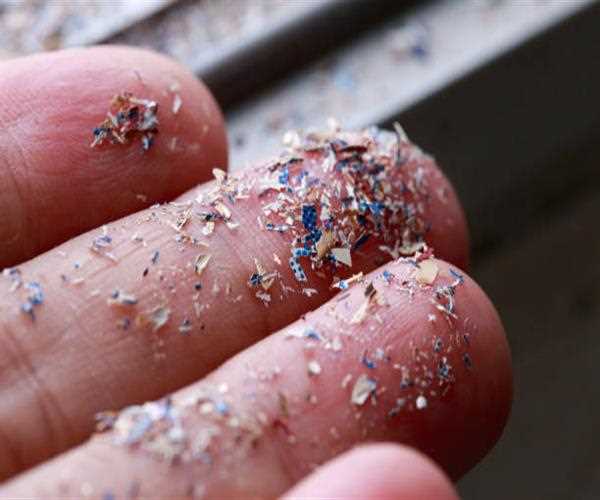Search here

18-Jan-2024 , Updated on 1/18/2024 9:21:59 PM
The human body, made up of microplastic can be seen after 50 years
Plastic pollution has integrated itself into the world’s very texture, polluting our seas and rivers as well as some of the earth's most uninhabitable places. After this, a shocking finding has thrown into light the fact that microplastics have started becoming part of our blood. Microplastic fragments less than even 5 millimeters in size are having their effect on human beings and they act as pollutants inside us now! This study is published in the environmental journal Environment International and has sent shockwaves through the scientists’ community raising questions about human health.
What are Microplastics?
Microplastics are particles of plastic pieces that undergo fragmentation below 5 millimeters in size or smaller than 2mm. They have been discovered in the oceans, rivers, and even throughout Mount Everest’s peaks which are certainly indicators of how common and harmful these compounds can be.
The rising concern
For the first time, Microplastic particles have been found in the placentas of newborn children, which the experts called "a matter of great concern."
It is still unknown how microplastics in the body affect health. However, the experts warned that they might include substances that could harm the fetus's developing immune system or cause long-term harm. The mothers most likely breathed in or swallowed the particles.
Another research, headed by Professor Dick Vethaak’s team at the Amsterdam-based Free University, demonstrated a strict comparison of blood samples from 22 healthy individuals. The results were unsettling: As much as 17 of the samples were found to contain microplastics, which suggests that even such tiny particles can enter our bodies and get into the bloodstream.
The identified varieties of plastics were numerous, which is an indicator that plastic permeates our lives. PET commonly used in plastic bottles, polystyrene as found in food containers and polyethylene which is known to be the building of plastic bags were all detected from the blood samples.
Why is it so harmful?
Laboratory results indicate that microplastics cause damage in human cells, leading to fears of inflammation, immunological disorders, and carcinogenicity. The fact that microplastics are found in the placentas of pregnant women and the stools of infants underpins the continued risk for vulnerable developing children, emphasizing an urgent need for research.
It is therefore important that future research focuses on understanding the route of entry for microplastics into a body, possible accumulation in various organs, and long-term effects associated with using them.
Ways to ensure safety from the microplastics
To begin with, the elimination of plastic production and consumption is a basic measure. Promoting reusable alternatives, responsible waste management practices, and imposing stricter regulations on single-use plastics are imperative in battling plastic pollution.
Secondly, there is great potential for innovation within the biodegradable and bio-compatible materials. By creating alternatives that decompose easily and are nonhazardous for nature or human health, we can get rid of our dependence on plastics which only harm the environment.
Thirdly, promoting public awareness and education is necessary. In the war against this environmental and health menace, it is important to give power to individuals to make informed choices on how they dispose of waste responsibly and hold policymakers accountable for sustainable practices.
The detection of microplastics in human blood is a wake-up. They force us to realize the seriousness of plastic waste and how it may affect our lives. By connecting scientific inquiry with responsible behavior and awareness, we will find ourselves on a path toward a plastic-free world. Let this be a new beginning, an occasion where we opt for safety over convenience and consider the well-being of our planet & and ourselves.
Taking Action
To deal with this, a multi-directional approach should be taken. It is essential to decrease the production and consumption of plastic, enhance waste disposal schemes, and well as research on biodegradable substitutes. Also, more research and public awareness programs are needed to promote personal responsibility so that people will demand tighter plastic use regulations.
The solution to eliminate microplastic waste individually:
The ocean cleanup has created the first solution that is efficient and scalable to intercept plastic in rivers before it reaches oceans. Through addressing 1000 rivers of the world. To eliminate the microplastic waste effect seven things can be done, which include:
1. Use fewer disposable plastics.
2. Join the support of legislation that would reduce plastic production and waste.
3. Recycle properly.
4. Take part in a beach or river clean-up.
5. Avoid products containing microbeads.
6. Spread the word.
7. Buy a water filter and stop drinking bottled water.
8. Purchase bio-friendly clothes.
9. Get a laundry ball.
10. Use air drying, do not use the clothes drying machine.
11. Take public transport and go for rail infrastructure.
12. Try to eat less meat and fish.
13. Set an active carbon filter on tap water.
14. Utilizing paper bags instead of plastic bags.
The Future of Plastics
The finding of microplastics in the human bloodstream provides a warning as we struggle with an escalating plastic problem. By taking action in advance and valuing sustainability, we will be able to save ourselves as well as the planet from the dangers of this major and dreadful pollution factor.

Content writer
I am a content writter !
Join Our Newsletter
Subscribe to our newsletter to receive emails about new views posts, releases and updates.
Copyright 2010 - 2025 MindStick Software Pvt. Ltd. All Rights Reserved Privacy Policy | Terms & Conditions | Cookie Policy